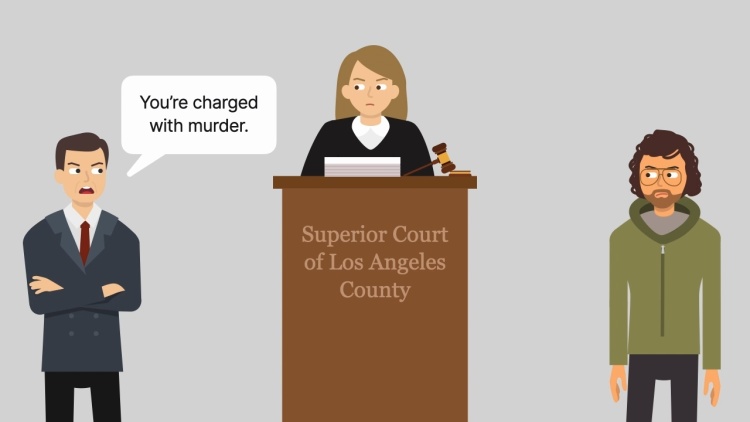People v. Breverman
California Supreme Court
19 Cal. 4th 142, 960 P.2d 1094, 77 Cal. Rptr. 2d 870 (1998)
- Written by Noah Lewis, JD
Facts
Two teenage Asian-American boys walked past the house of a White man, Scott Breverman (defendant). A group of young people in the driveway called the boys racial slurs and kicked and beat them. The following night, one of the boys returned with six to 10 teenage Asian-American boys, seeking an even fight. The group taunted Breverman and used a bat and other implements to hit Breverman’s car parked in the driveway. Breverman thought the boys were rushing his door and fired four shots through a window, causing the boys to flee. Breverman, saying he acted in a continuous, chaotic response, went outside and shot 10 more rounds in the direction of the boys, claiming he was not aiming at them, but killing Andreas Suryaatmadja. Breverman was convicted of murder. The jury received instructions on (1) second-degree murder; (2) justifiable homicide (reasonable self-defense); (3) voluntary manslaughter premised on unreasonable self-defense; and (4) involuntary manslaughter, the latter two being lesser necessarily included offenses. Breverman appealed, arguing the trial court failed, sua sponte, to instruct the jury on a heat-of-passion theory of voluntary manslaughter. The appellate court agreed and found the error prejudicial because the jury had not otherwise resolved the heat-of-passion issue. The California Supreme Court granted the state’s review petition.
Rule of Law
Issue
Holding and Reasoning (Baxter, J.)
What to do next…
Here's why 899,000 law students have relied on our case briefs:
- Written by law professors and practitioners, not other law students. 47,000 briefs, keyed to 994 casebooks. Top-notch customer support.
- The right amount of information, includes the facts, issues, rule of law, holding and reasoning, and any concurrences and dissents.
- Access in your classes, works on your mobile and tablet. Massive library of related video lessons and high quality multiple-choice questions.
- Easy to use, uniform format for every case brief. Written in plain English, not in legalese. Our briefs summarize and simplify; they don’t just repeat the court’s language.





